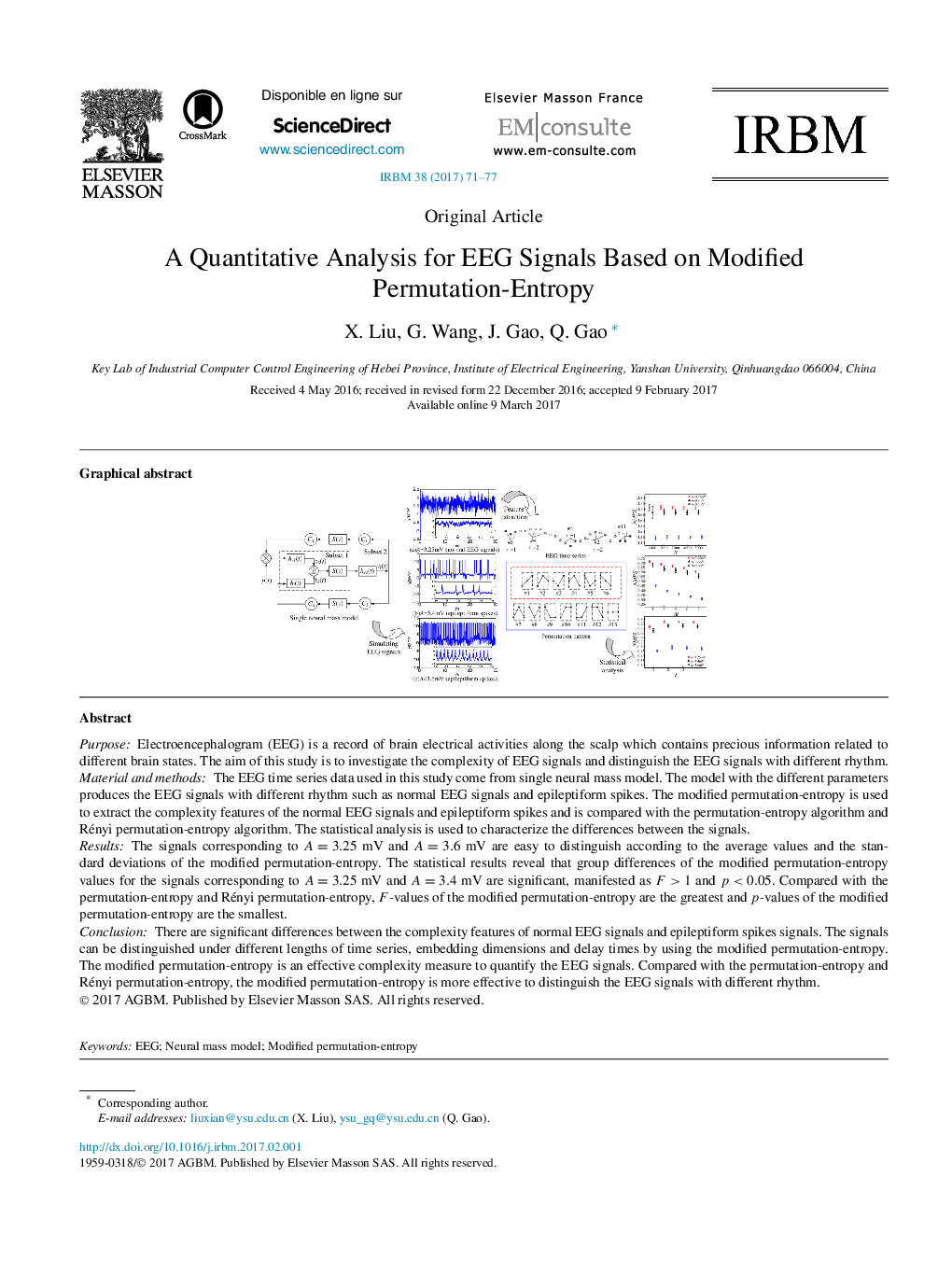| کد مقاله | کد نشریه | سال انتشار | مقاله انگلیسی | نسخه تمام متن |
|---|---|---|---|---|
| 5031831 | 1369962 | 2017 | 7 صفحه PDF | دانلود رایگان |

- Modified permutation-entropy is used for a quantitative analysis of EEG signals.
- Complexities are accurately extracted by mapping equal value onto same symbol.
- Complexities of EEGs with different rhythms are significantly different.
- EEGs with different rhythms can be distinguished according to complexity features.
PurposeElectroencephalogram (EEG) is a record of brain electrical activities along the scalp which contains precious information related to different brain states. The aim of this study is to investigate the complexity of EEG signals and distinguish the EEG signals with different rhythm.Material and methodsThe EEG time series data used in this study come from single neural mass model. The model with the different parameters produces the EEG signals with different rhythm such as normal EEG signals and epileptiform spikes. The modified permutation-entropy is used to extract the complexity features of the normal EEG signals and epileptiform spikes and is compared with the permutation-entropy algorithm and Rényi permutation-entropy algorithm. The statistical analysis is used to characterize the differences between the signals.ResultsThe signals corresponding to A=3.25mV and A=3.6mV are easy to distinguish according to the average values and the standard deviations of the modified permutation-entropy. The statistical results reveal that group differences of the modified permutation-entropy values for the signals corresponding to A=3.25mV and A=3.4mV are significant, manifested as F>1 and p<0.05. Compared with the permutation-entropy and Rényi permutation-entropy, F-values of the modified permutation-entropy are the greatest and p-values of the modified permutation-entropy are the smallest.ConclusionThere are significant differences between the complexity features of normal EEG signals and epileptiform spikes signals. The signals can be distinguished under different lengths of time series, embedding dimensions and delay times by using the modified permutation-entropy. The modified permutation-entropy is an effective complexity measure to quantify the EEG signals. Compared with the permutation-entropy and Rényi permutation-entropy, the modified permutation-entropy is more effective to distinguish the EEG signals with different rhythm.
145
Journal: IRBM - Volume 38, Issue 2, April 2017, Pages 71-77